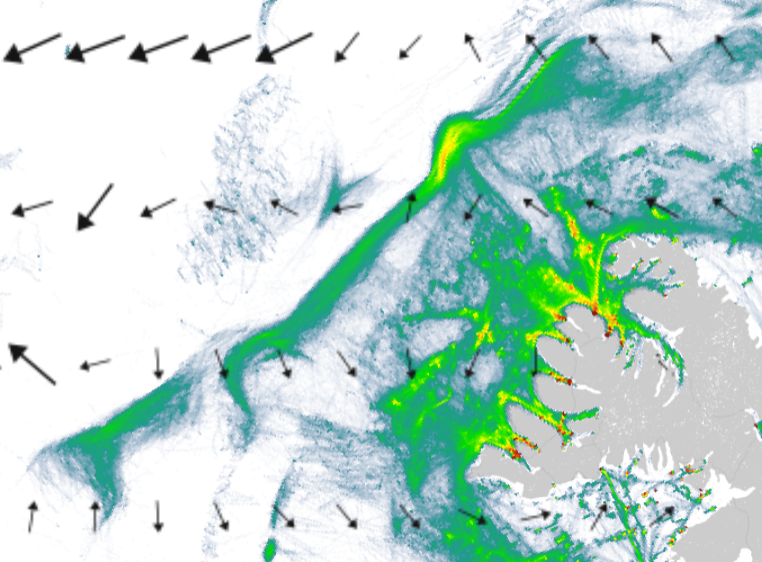User organisation
Frontex is the European Border and Coast Guard Agency, and it promotes, coordinates and develops European border management in line with the EU Charter of Fundamental Rights and the concept of Integrated Border Management . Frontex supports EU Member States and Schengen Associated Countries in managing the EU’s external borders and fighting cross-border crime. With the newly-created European Border and Coast Guard standing corps, the first uniformed service of the European Union, Frontex is present in the places where European countries need support, working together with them for a safer, more secure Europe.
In good company with several other EU institutions and agencies, Frontex has been using EMODnet data for quite some time. In particular, Frontex regularly uses EMODnet’s vessel density maps, a data product that was first released in 2019 and has been kept up to date ever since.
EMODnet vessel density maps show the distribution of ships, based on the instantaneous number of vessels per square kilometre in a month. The maps are generated starting from ship positions retrieved from the Automatic Identification System (AIS), an automatic ship transponder system used onboard certain vessels.
Challenges faced by the user
When it comes to monitoring sea borders, it essential to be able to detect “abnormal vessel behaviour” as quickly as possible, so as to trigger an alert and have a closer look and potentially detect illegal immigration or cross-border crime.
But how does one detect abnormal vessel behaviour? While there are many information sources that can be used, most of them are not particularly useful when used in isolation from each other. In fact, combining different sources may well provide a comprehensive and more accurate overview. Vessel density is an indicator that can be used for this purpose, for instance by observing a ship’s route against historical navigation patterns. The protocol used by EMODnet (WMS) facilitates an easy integration in map applications and with other types of data from different providers.
EMODnet services used
EMODnet data helps to improve the quality of services and capabilities provided. The more information available about vessel traffic the better it is to identify potentially abnormal vessel behaviour, and ultimately prevent cross-border crime.
The border management community can use EMODnet map services that are easily integrable into custom applications. Frontex applications combine EMODnet map services with other internal and external map services for supporting detection of abnormal vessel behaviour.
Impact of EMODnet
Having this type of data publicly available and using standards is cost- and time-effective, as our community does not need to outsource this data, and it can be directly combined with other data sets in our in-house applications, ensuring a holistic analysis
In the future, Frontex does not exclude to integrate more EMODnet data sets into applications for the border management community. If more map services are identified as useful for the border management community, they will also be made available.
Media

Combination of vessel density and sea currents data in one single application. Source: Frontex
Did you like this story?
Receive our monthly updates directly in your inbox:
